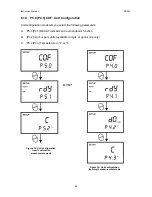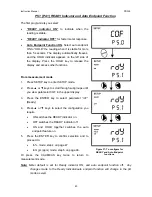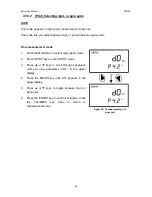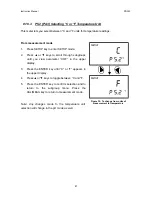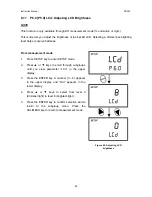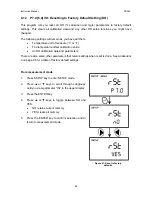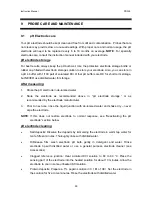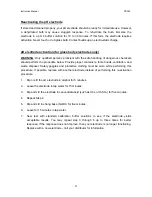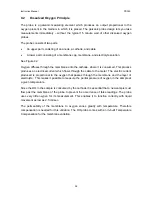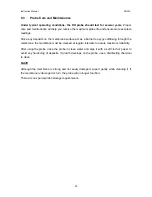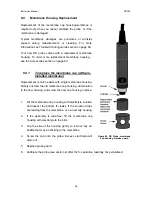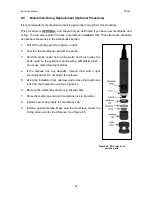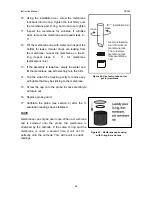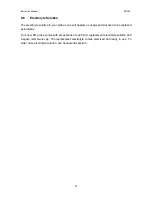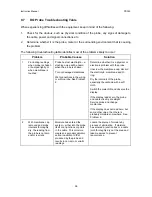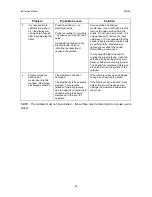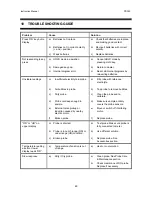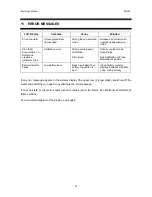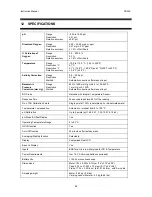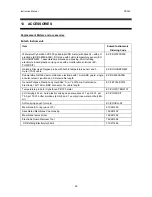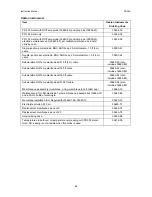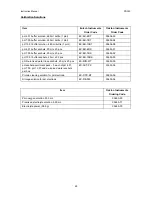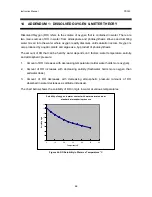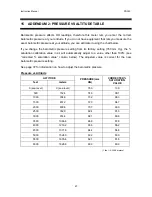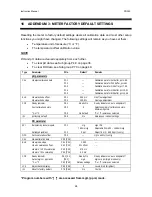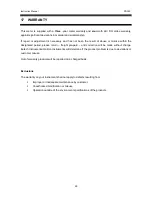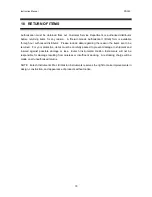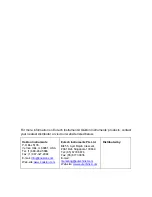
Instruction Manual
PD 300
9.7
DO Probe Troubleshooting Table
When experiencing difficulties with the equipment, keep in mind of the following:
1. Check for the obvious, such as physical condition of the probe, any signs of damage to
the cable, power and signal connections etc.
2. Determine whether it is the probe, meter or the surrounding environment that is causing
the problem.
The following troubleshooting table identifies most of the problems likely to occur:
Problem Probable
Causes
Solution
1. Fluctuating
readings
when probe is shaken
or bumped lightly or
when membrane is
touched.
Probe has lost electrolyte – a
sloshing noise will be heard
when the probe is shaken.
Torn or damaged membrane.
Wet connections in the wiring
or within probe. See Problem
2.
Determine whether it is a physical or
electronic problem with the probe.
Unscrew the membrane cap, discard
the electrolyte, membrane and O-
ring.
Dry the internals of the probe,
especially the cathode with a soft
cloth.
Switch the meter ON and observe the
display.
If the display reads zero, the probe
and cable circuitry are alright.
Service probe and change
membrane.
If the display does not read zero, but
some other value, then there is
probably moisture somewhere. See
Problem 2.
2. With
membrane
cap
removed and probe
internals thoroughly
dry, the reading from
the probe is not zero
and/or is erratic.
Moisture has entered the
system – either into the probe
itself or at junctions or points
in the cable. This moisture
creates a secondary galvanic
action in addition to that
produced by the probe and
results in non-zero or erratic
readings.
Locate the source of moisture by
process of elimination. If moisture
has entered a junction box or a cable
joint, thoroughly dry out the area and
take measures to prevent
reoccurrence.
58

